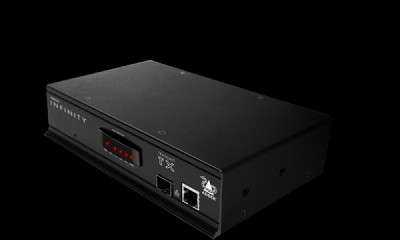Broadcast & Distribution – At CCW (Content and Communications World), we had a chance to take a more careful look at Adder’s KVM (keyboard, video and mouse) extension solutions. KVM extension is needed when computers or servers are located in one location and the keyboard, mouse and monitor are located somewhere else.
For example, edit bays can be nearly anywhere in the world, but the content is likely to reside somewhere else. KVM allows all the content and tools to reside on the server for central management, while enabling editing in remote locations.
At CCW, Adder told us about exactly this solution for a company called Illumination Entertainment. The company was tasked with doing the editing of the Despicable Me movie and needed to add edit bays to get the job done. To do this, it used the AdderLink Infinity switchers and extenders.
 Instead of having a client-server configuration, many operations want the server/storage to remain in a secure and controlled environment. To interact with the data and programs, one then needs to extend the keyboard and mouse via a USB extender, and the output display via a DVI, HDMI or DisplayPort extender. At the server, a transmit device accepts the keyboard, mouse and video input where it is converted into the IP domain. CAT5/6 cables or fiber optic cables can then transport this info to data on the remote desktop where receive modules are placed. These convert the IP info back to baseband video or keyboard/mouse commands.
Instead of having a client-server configuration, many operations want the server/storage to remain in a secure and controlled environment. To interact with the data and programs, one then needs to extend the keyboard and mouse via a USB extender, and the output display via a DVI, HDMI or DisplayPort extender. At the server, a transmit device accepts the keyboard, mouse and video input where it is converted into the IP domain. CAT5/6 cables or fiber optic cables can then transport this info to data on the remote desktop where receive modules are placed. These convert the IP info back to baseband video or keyboard/mouse commands.
For more complex installs, a standard network IP switch may be placed in between the servers and desktops. That should allow any desktop to control any computer it has the rights to access. This sort of set up was demonstrated at CCW with several PCs accessible for display on a video wall composed of a number of different monitors. A control layer manages how data is accessed and displayed.
Adder’s group marketing manager, Jamie Shepperd, told us that the company uses a proprietary codec that offers lossless video compression of video (1080p/60) in less than 1.3 Gbps. This was necessary as there is too much latency in conventional codecs like H.264, he explained.
At Illumination Entertainment, it was able to use the edit bays to do dailies or reviews, or access the content to playback in a separate presentation suite for the client, all without interrupting other editing sessions.
Adder also announced a new distribution and fulfillment agreement with JB&A, with product available through the CDW website. This is mainly to support larger installations, explained Shepperd. – Chris Chinnock

